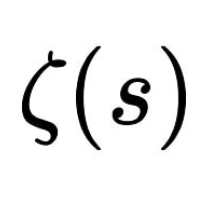Prolongement par continuité d'une fonction de deux variables, étude de dérivabilité
★★★★
On définit la fonction de deux variables $f $ par : $\forall (x;y) \in D_f = \mathbb{R}^2 \setminus \{(0;0)\}, \quad f(x; y) = \frac{x^2}{(x^2 + y^2)^{3/4}}.$
Peut-on prolonger $f$ en une fonction continue sur $\mathbb{R}^2$ ?
Si oui, étudier l'existence de dérivées partielles en $(0;0)$ pour ce prolongement.
Peut-on prolonger $f$ en une fonction continue sur $\mathbb{R}^2$ ?
Si oui, étudier l'existence de dérivées partielles en $(0;0)$ pour ce prolongement.
La fonction de deux variables $f$ est un quotient de deux fonctions continues sur $D_f = \mathbb{R}^2 \setminus \{(0;0)\}$, la fonction au dénominateur ne s'annule pas sur $D_f$ , donc $f$ est continue sur $D_f$.
Soit $y \neq 0$,
$$
f(0; y) = \frac{0^2}{(0^2 + y^2)^{3/4}} = 0 \quad \underset{y \to 0}{\longrightarrow} 0.
$$
Donc si on suppose que $f$ peut se prolonger par continuité en $(0;0)$, nécessairement $f(0;0) = 0$.
On veut démontrer que $f(x;y) \underset{(x;y) \to (0;0)}{\longrightarrow} 0$.
Soit $(x; y) \in D_f$,
$$
\left| f(x, y) \right| = \left| \frac{x^2}{(x^2 + y^2)^{3/4}} \right|.
$$
$$
= \frac{x^2}{(x^2 + y^2)^{3/4}}, \quad \quad \frac{x^2}{(x^2 + y^2)^{3/4}} \geq 0
$$
$$
\leq \frac{x^2 + y^2}{(x^2 + y^2)^{3/4}}, \quad \quad y^2 \geq 0
$$
$$
= (x^2 + y^2)^{1 - \frac{3}{4}}
$$
$$
= (x^2 + y^2)^{\frac{4}{4} - \frac{3}{4}}
$$
$$
= (x^2 + y^2)^{\frac{1}{4}}
$$
Sachant que $\frac{1}{4} > 0$, la fonction $t \to t^{\frac{1}{4}}$ est définie et continue en $0$.
Donc $(x^2 + y^2)^{\frac{1}{4}} \underset{(x;y) \to (0;0)}{\longrightarrow} (0^2 + 0^2)^{\frac{1}{4}} = 0$.
Donc, par théorème d'encadrement (ou théorème des gendarmes), $|f(x;y)| \underset{(x;y) \to (0;0)}{\longrightarrow} 0$, donc $f(x; y) \underset{(x;y) \to (0;0)}{\longrightarrow} 0 \in \mathbb{R}$.
Ainsi, on peut prolonger par continuité $f$ en $(0;0)$ en posant $f(0;0) = 0$.
On calcule le taux de variation de la fonction $f$ en $(0;0)$ par rapport à la seconde variable $y$.
Soit $h \neq 0$,
$$
\tau_y(h) = \frac{1}{h} \left(f(0;0 + h) - f(0;0)\right)
$$
$$
\tau_y(h) = \frac{1}{h} \left(f(0; h) - 0\right)
$$
$$
\tau_y(h) = \frac{1}{h} \left(\frac{0^2}{(0^2 + h^2)^{3/4}}\right)
$$
$$
\tau_y(h) = \frac{1}{h} (0)
$$
$$\tau_y(h) = 0 \quad \underset{h \to 0}{\longrightarrow} 0
$$
Donc la fonction de deux variables $f$ admet une dérivée partielle par rapport à la seconde variable $y$ en $(0;0)$, celle-ci vaut $\frac{\partial f}{\partial y}(0;0) = 0$.
On calcule le taux de variation de la fonction $f$ en $(0;0)$ par rapport à la première variable $x$.
Soit $h > 0$,
$$
\tau_x(h) = \frac{1}{h} \left( f(0 + h; 0) - f(0;0) \right)
$$
$$
\tau_x(h) = \frac{1}{h} \left( f(h; 0) - 0 \right)
$$
$$
\tau_x(h) = \frac{1}{h} \left( \frac{h^2}{(h^2 + 0^2)^{3/4}} \right)
$$
$$
\tau_x(h) = \frac{1}{h} \left( \frac{h^2}{h^{2 \cdot \frac{3}{4}}} \right)
$$
$$
\tau_x(h) = \frac{h^1}{h^{\frac{3}{2}}}
$$
$$
\tau_x(h) = h^{\frac{2}{2} - \frac{3}{2}}
$$
$$
\tau_x(h) = h^{-\frac{1}{2}}
$$
$$
\tau_x(h) = \frac{1}{\sqrt{h}} \quad \underset{h \to 0^+}{\longrightarrow} +\infty
$$
Donc la fonction de deux variables $f$ n'admet pas de dérivée partielle par rapport à la première variable $x$ en $(0;0)$.
Soit $y \neq 0$,
$$
f(0; y) = \frac{0^2}{(0^2 + y^2)^{3/4}} = 0 \quad \underset{y \to 0}{\longrightarrow} 0.
$$
Donc si on suppose que $f$ peut se prolonger par continuité en $(0;0)$, nécessairement $f(0;0) = 0$.
On veut démontrer que $f(x;y) \underset{(x;y) \to (0;0)}{\longrightarrow} 0$.
Soit $(x; y) \in D_f$,
$$
\left| f(x, y) \right| = \left| \frac{x^2}{(x^2 + y^2)^{3/4}} \right|.
$$
$$
= \frac{x^2}{(x^2 + y^2)^{3/4}}, \quad \quad \frac{x^2}{(x^2 + y^2)^{3/4}} \geq 0
$$
$$
\leq \frac{x^2 + y^2}{(x^2 + y^2)^{3/4}}, \quad \quad y^2 \geq 0
$$
$$
= (x^2 + y^2)^{1 - \frac{3}{4}}
$$
$$
= (x^2 + y^2)^{\frac{4}{4} - \frac{3}{4}}
$$
$$
= (x^2 + y^2)^{\frac{1}{4}}
$$
Sachant que $\frac{1}{4} > 0$, la fonction $t \to t^{\frac{1}{4}}$ est définie et continue en $0$.
Donc $(x^2 + y^2)^{\frac{1}{4}} \underset{(x;y) \to (0;0)}{\longrightarrow} (0^2 + 0^2)^{\frac{1}{4}} = 0$.
Donc, par théorème d'encadrement (ou théorème des gendarmes), $|f(x;y)| \underset{(x;y) \to (0;0)}{\longrightarrow} 0$, donc $f(x; y) \underset{(x;y) \to (0;0)}{\longrightarrow} 0 \in \mathbb{R}$.
Ainsi, on peut prolonger par continuité $f$ en $(0;0)$ en posant $f(0;0) = 0$.
On calcule le taux de variation de la fonction $f$ en $(0;0)$ par rapport à la seconde variable $y$.
Soit $h \neq 0$,
$$
\tau_y(h) = \frac{1}{h} \left(f(0;0 + h) - f(0;0)\right)
$$
$$
\tau_y(h) = \frac{1}{h} \left(f(0; h) - 0\right)
$$
$$
\tau_y(h) = \frac{1}{h} \left(\frac{0^2}{(0^2 + h^2)^{3/4}}\right)
$$
$$
\tau_y(h) = \frac{1}{h} (0)
$$
$$\tau_y(h) = 0 \quad \underset{h \to 0}{\longrightarrow} 0
$$
Donc la fonction de deux variables $f$ admet une dérivée partielle par rapport à la seconde variable $y$ en $(0;0)$, celle-ci vaut $\frac{\partial f}{\partial y}(0;0) = 0$.
On calcule le taux de variation de la fonction $f$ en $(0;0)$ par rapport à la première variable $x$.
Soit $h > 0$,
$$
\tau_x(h) = \frac{1}{h} \left( f(0 + h; 0) - f(0;0) \right)
$$
$$
\tau_x(h) = \frac{1}{h} \left( f(h; 0) - 0 \right)
$$
$$
\tau_x(h) = \frac{1}{h} \left( \frac{h^2}{(h^2 + 0^2)^{3/4}} \right)
$$
$$
\tau_x(h) = \frac{1}{h} \left( \frac{h^2}{h^{2 \cdot \frac{3}{4}}} \right)
$$
$$
\tau_x(h) = \frac{h^1}{h^{\frac{3}{2}}}
$$
$$
\tau_x(h) = h^{\frac{2}{2} - \frac{3}{2}}
$$
$$
\tau_x(h) = h^{-\frac{1}{2}}
$$
$$
\tau_x(h) = \frac{1}{\sqrt{h}} \quad \underset{h \to 0^+}{\longrightarrow} +\infty
$$
Donc la fonction de deux variables $f$ n'admet pas de dérivée partielle par rapport à la première variable $x$ en $(0;0)$.
